I’ve been a fan of horror manga for well over a decade. Yet the genre has been massively popular in Japan for a long time, long before it spread across the globe in the mid-2000s.
Horror manga comes with a unique blend of creepy artwork, spine-chilling stories, and is often heavily influenced by Japanese culture and society. For this reason, horror manga has captured the attention of many horror fans worldwide.
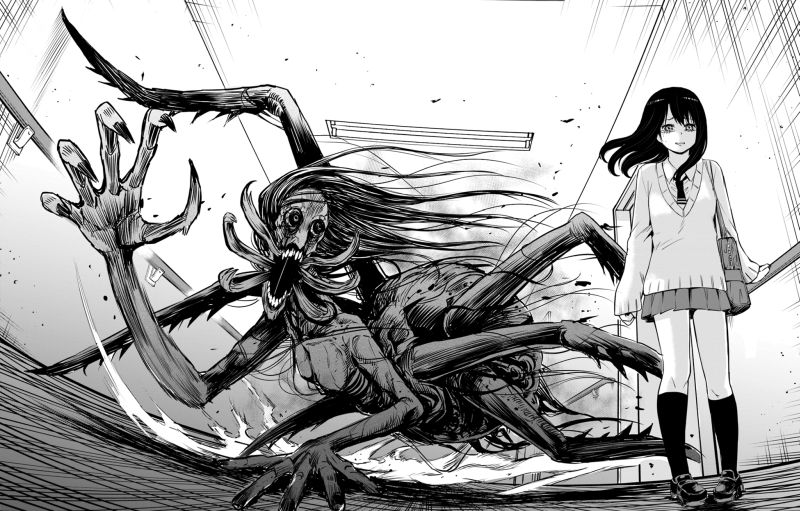
Getting into horror manga, especially for those who are new to the genre or manga in general, can be overwhelming. That’s why I decided to write an article that will explore the world of horror manga. In it, I want to explore the genre’s origins, its rise to popularity, the different types of horror manga, what makes it such a unique medium, and what the future holds. I also want to discuss and introduce you to some of the most famous and influential horror manga artists.
Whether you’re a seasoned horror fan or entirely new to the genre, I’m sure this guide can provide you with a plethora of useful information about the stunning and captivating world of horror manga.
What Is Horror Manga?
At its core, horror manga is a subgenre of Japanese comics aimed to scare and unsettle readers. They can include a wide variety of elements such as supernatural beings, gore, realistic horror stories, but also suspenseful plots and mind-boggling twists. The genre has a long history, with the first horror manga dating back to the 1950s. They’ve since become an important part of Japanese pop culture.
The most defining characteristic of horror manga is the use of artwork to convey a sense of fear and unease. Horror manga artists often work with exaggerated facial expressions, intricate line work, and a stark contrast between light and dark to create a visual atmosphere that helps convey a story’s mood. Additionally, many artists take inspiration from Japanese mythology, folklore, urban legends, but also from Japanese culture and society.
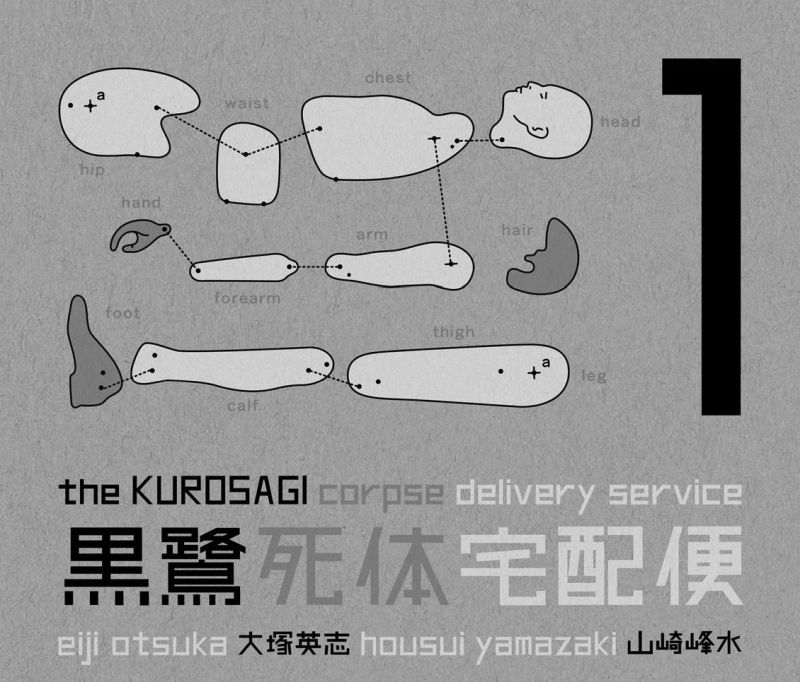
Another critical aspect of horror manga is the exploration of a wide variety of sub-genres. While many center on supernatural horror, there are also those that focus on psychological horror, experimental horror, and even genre-blends such as comedy horror. This diversity allows readers to not only find stories suited for their specific interests but also keeps the genre from going stale.
Overall, horror manga is amongst the most fascinating and multi-faceted manga genres out there. I’m sure has something to offer for any horror fan.
The Origins of Horror Manga
Horror manga’s history can be traced back to the post-World War II era in Japan. During this time, the country went through a period of cultural upheaval. Manga, especially horror manga, emerged to reflect these changes. Some of the earliest examples were published in the 1950s and 60s. They often centered on ghosts and monsters and reminiscent of the horror films of that era.
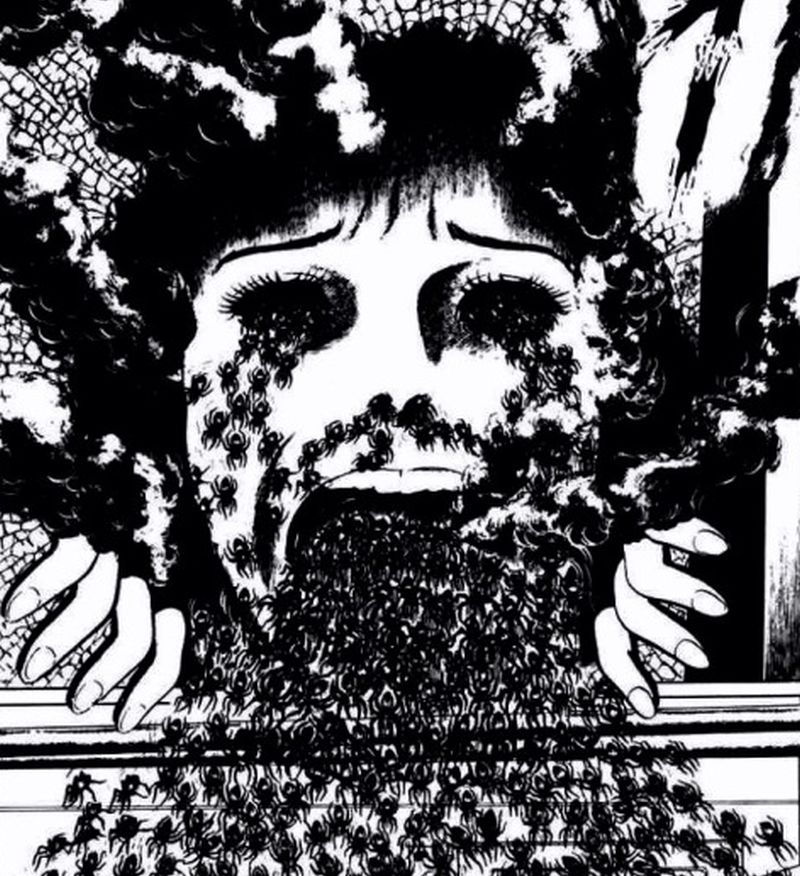
In the 1970s and 1980s, horror manga evolved into a more distinct genre. This was first noticeable in the works of Kazuo Umezu, who began to experiment with more psychological themes. One of the most famous horror manga series of the time is his work ‘The Drifting Classroom,’ which features a school full of elementary students who are transported to a twisted future. Later, this trend of using psychological themes was carried on by none other than the horror manga master, Junji Ito. His works are known for both his reliance on psychological themes and his disturbing and unsettling imagery.
In the 1990s and the early 2000s, horror manga saw a stark rise in popularity in Japan and, for the first time, abroad. This can be attributed to two major works of the time: Hitoshi Iwaaki’s Parasite and Junji Ito’s masterpiece, Uzumaki. Both helped to cement the genre as one of the most significant parts of the Japanese comic landscape. In the years to come, because of its rising popularity, many new artists began to explore horror manga and experiment with different art styles and sub-genres.
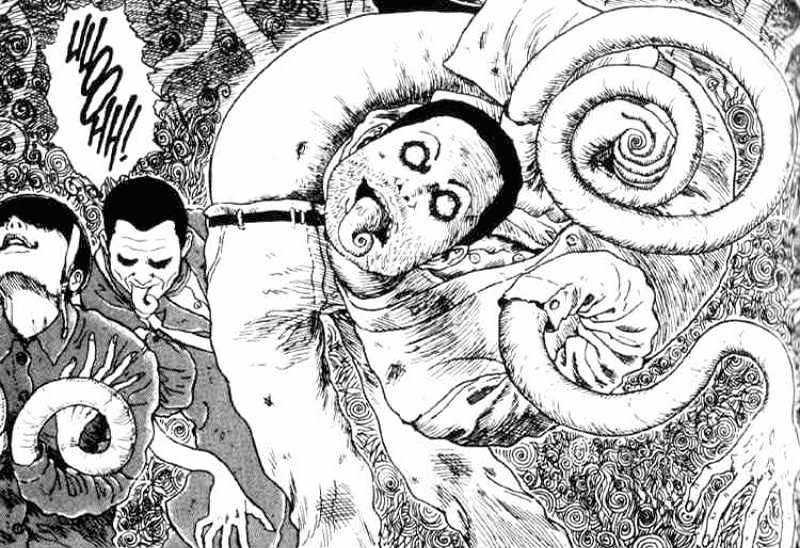
Today, horror manga is a thriving genre with new artists and series emerging. While it’s still deeply rooted in Japanese culture, it has gained a huge following around the globe, and many works have been translated into multiple languages.
The Popularity of Horror Manga
One of the most significant factors for the success of horror manga was the growing popularity of anime. With anime’s rise in the west, many people became curious about the Japanese comic landscape and soon discovered manga for themselves.
Another factor is the rise of digital publishing platforms and online communities. They made it much easier for people to discover, learn about, and experience new works. While platforms like Twitter and Reddit comprise huge communities centered on horror manga, one shouldn’t forget the importance of earlier online communities, such as forums and image boards. For instance, Junji Ito’s works, including “The Enigma of Amigara Faults,” were first shared on 4chan’s anime and manga board in the mid-2000s and helped pave the way for his massive success in the West.
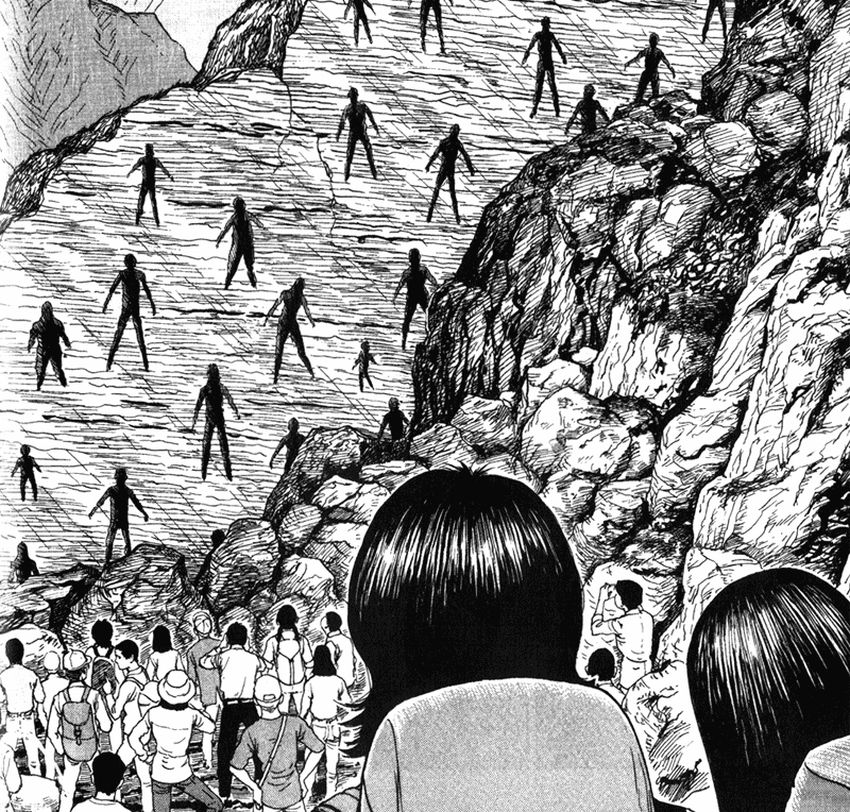
However, the most significant factors for horror manga’s popularity are its unique style of storytelling and the wide range of themes and subjects it features.
In terms of storytelling, many horror manga opt for a slow-burn approach, building tension and suspense, sometimes over multiple chapters, before the story reaches its horrific climax. This technique is incredibly effective in drawing readers in and keeping them engaged. All of this is enhanced by the use of often gruesome and twisted imagery. This allows the audience to not only read but also see the horror in all its glory.
While many horror manga, especially older works, feature supernatural creatures and monsters, the genre has since broadened massively. Today, the genre encompasses various sub-genres, including psychological horror, sci-fi horror, and even comedy horror. This diversity allows readers to find stories suited to their specific interests and keeps the genre from becoming stale.
The Different Types of Horror Manga
Horror manga is a diverse genre that encompasses a wide range of styles, themes, and topics. Here are some of the more popular types readers might be interested in:
Supernatural Horror:
The most common and oldest type of horror manga, comprising stories centered on ghosts, demons, and other supernatural beings as sources of horror. Series such as School Zone by Kanako Inuki and God’s Left Hand, Devil’s Right Hand by Kazuo Umezu fall into this category. They often feature cursed objects or locations that bring terrible consequences for the characters involved with them. They are often different from other horror stories because they are deeply connected to Japanese culture, society, and folklore.
Realistic Horror:
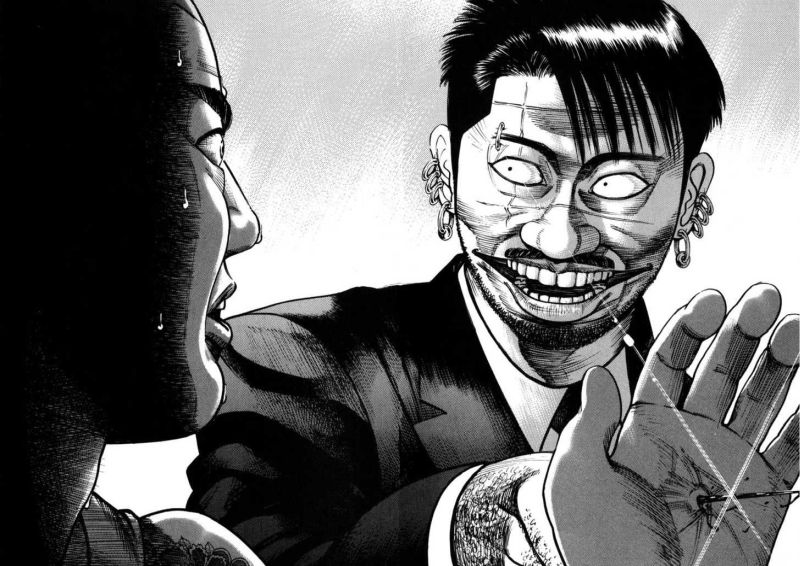
This type of horror manga centers on real-life scenarios and occurrences, which often makes them scarier than other types. Their stories often involve serial killers, stalkers, or other twisted but entirely human antagonists. One famous example is Zashiki Onna by Minetaro Mochizuki, which is the story of a twisted stalker. Another example is Ichi the Killer, which centers on the Japanese underworld, namely the yakuza.
Psychological Horror:
Psychological horror manga focuses on the inner fears, turmoil, and phobias of characters. They often center on themes such as paranoia and madness, using surreal and unsettling imagery to convey the twisted world characters see. Famous psychological horror manga include Nijigahara Holograph by Inio Asano, Dragon Head by Minetaro Mochizuki, and Homunculus by Hideo Yamamoto.
Body Horror:
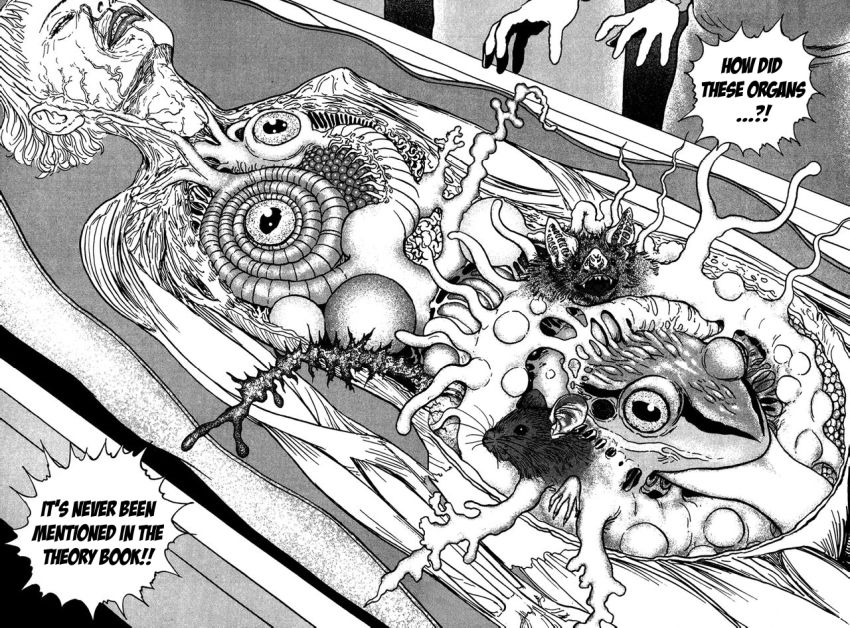
This sub-genre of horror manga centers on the horrific and grotesque transformation of the human body. Standout examples include Parasyte by Hitoshi Iwaaki, which features parasitic organisms that take over human hosts and warp them in various disturbing ways. Other examples can be found in the works of Junji Ito, such as his story titled Dissection Girl.
Historical Horror:
These types of horror manga feature monsters and creatures from Japanese mythology and folklore. They often take place in feudal Japan or similar historical settings and mix elements of historical fiction with spine-chilling horror. Famous examples include Dororo by Osamu Tezuka, as well as Onikiri Jyuzo by Segawa Masaki, and the more recent Demon Slayer by Koyoharu Gotouge.
Comedy Horror:
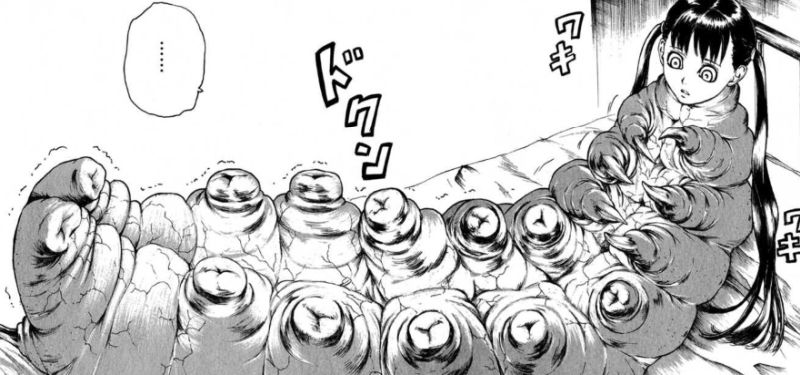
While most horror manga comprises works that are dark and unsettling, some series mix horror with comedy. One of the most famous examples is Franken Fran by Katsuhisa Kigitsu, a series centering on Fran, a brilliant surgeon. While many of the series’ chapters are disturbing, others are satirical and humorous.
Cosmic Horror:
These horror manga are reminiscent of the works of H. P. Lovecraft and often center on powers beyond our understanding. They are often less reliant on feasible antagonists and monsters, but more on the influences they have on characters. Famous examples include Uzumaki by Junji Ito, which centers on a town haunted by spirals, and Gou Tanabe, who is adapting a variety of Lovecraft’s works.
Weird Horror:
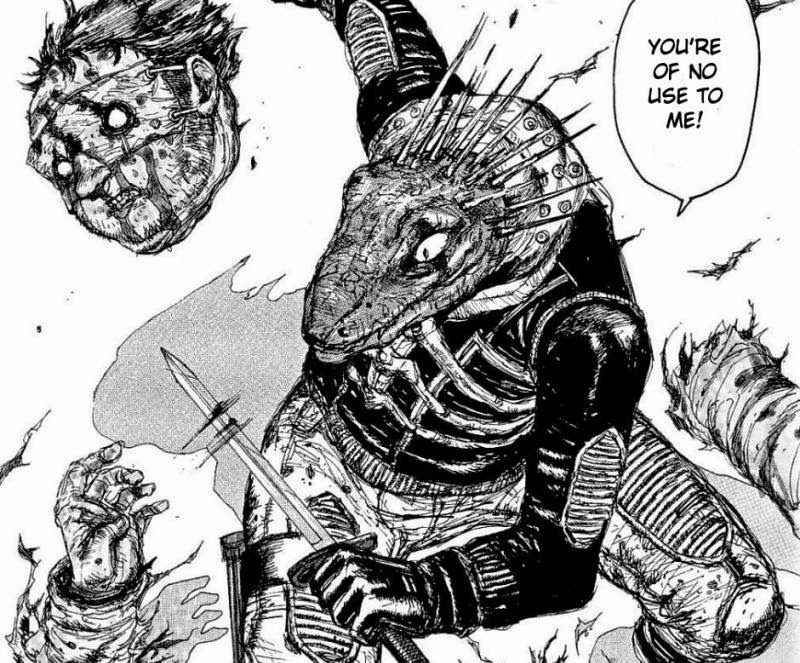
Some horror manga are so unique and experimental that it’s hard to place them in any of the aforementioned categories. Examples of weird horror manga include the works of Shintaro Kago, especially his works Abstraction, The Memories of Others, or Industrial Revolution and World War. Another popular weird horror manga is Dorohedoro by Q Hayashida. The manga has a unique setting full of weird characters and an overall humorous atmosphere, even if the events depicted are nothing short of horrific.
These are just some of the different types of horror manga readers can explore and there are many others who mix a variety of sub-genres to create their very own blend of horror. As the genre continues to evolve and grow in popularity, new-subgenres and themes are likely to emerge.
Famous Horror Manga Artists and Their Works
Horror manga, like any other genre or form of media, is defined by the authors who create it. For this reason, I want to talk about some of the most notable and influential horror manga artists out there.
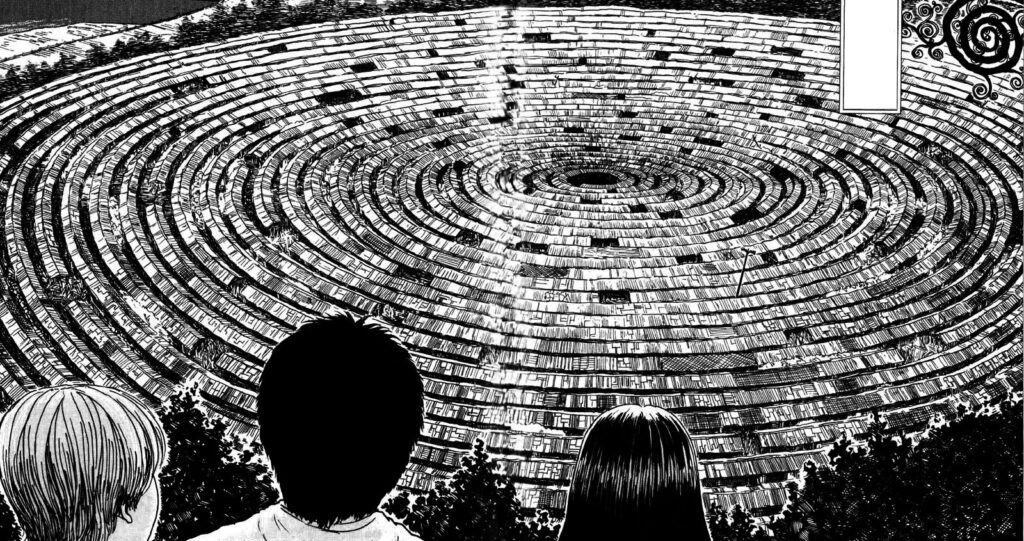
Kazuo Umezu:
Kazuo Umezu is known as the godfather of modern horror manga. He’s a pioneer of the genre and helped popularize it. While his works have a rather dated look to them, they still stand the test of time for their subject matter and the horrific scenarios they depict. His works often feature younger characters and center on themes such as isolation, fear, and the supernatural. His most famous works include The Drifting Classroom, Cat Eyed Boy, God’s Left Hand, Devil’s Right, and the Scary Book series.
Hideshi Hino:
Hideshi Hino is another earlier horror manga artist. He is known mostly for his disturbing and grotesque art style, often featuring bizarre characters and nightmarish creatures. His most famous works include Panorama of Hell, Hell Baby, and the Hino Horror series. His works are often full of gratuitous violence and unsettling imagery.
Kanako Inuki:
Kanako Inuki is often called the Queen of horror manga. Her works often center on the supernatural, Japanese folklore, and traditional horror scenarios. Similarly to Kazuo Umezu, her work often features younger protagonists. Her style can often appear cute, even whimsical, but this stands in stark contrast to the often twisted scenarios depicted. This makes her works a rather unique blend of horror and reading experience.
Junji Ito:
Arguably the most famous Japanese horror manga artist, Junji Ito is known for his surreal and unsettling art style. Ito’s a master of the craft, often exploring the boundaries of the horror genre. Many of his works explore psychological themes, while others center on cosmic horror and body horror and are full of grotesque and terrifying imagery. His most well-known work is his masterpiece Uzumaki, but he’s also known for works such as Tomie and Hellstar Remina. If you want to know more about Junji Ito, check out my articles on his style or my list of the best Junji Ito stories.
Shintaro Kago:
Shintaro Kago’s work can be best described as guro or Ero guro, meaning his works are full of grotesque imagery mixing eroticism and gore. Yet his works are also full of paranoia, twisted scenarios, and grotesque subject matter. He often pushes the boundaries of the horror manga medium, goes beyond what’s acceptable, and breaks conventions. This is most noticeable in his work Abstraction. His works are among the weirdest in the entire genre.
These are just some of the more notable names in the horror genre, and there are many other popular artists out there. I believe, however, that the ones mentioned here had a lasting influence on the genre.
What Makes Horror Manga Unique From Other Horror Media?
Horror manga has a variety of unique characteristics that sets it apart from other horror media. I especially want to discuss the topics of visual storytelling, cultural context, character development and long-form storytelling.
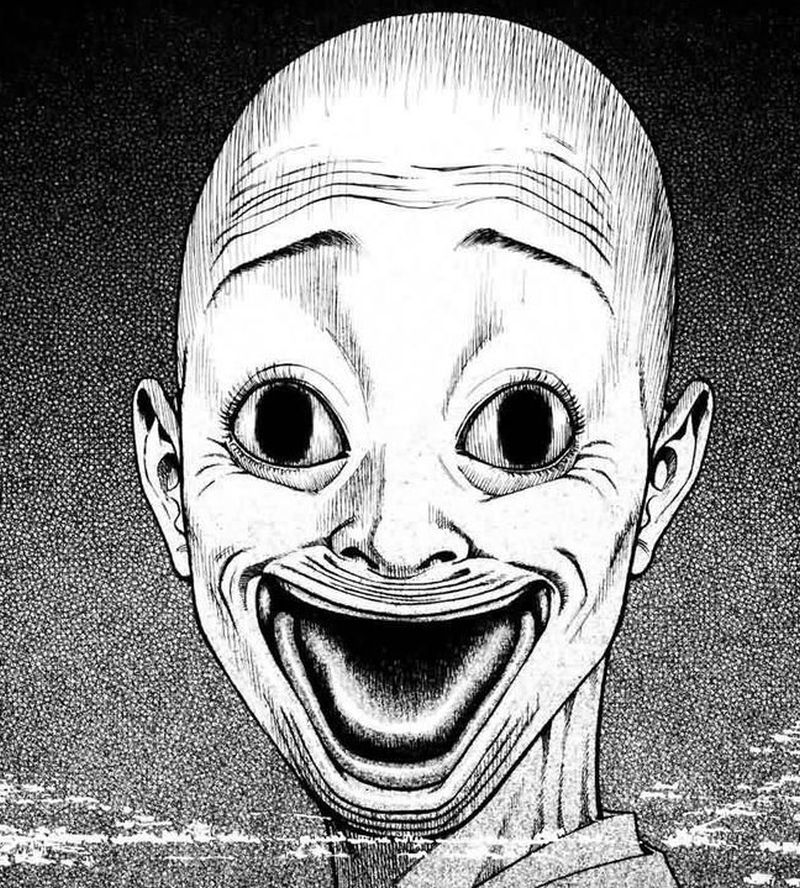
Visual Storytelling:
One of the major advantages of manga in general and horror manga specifically is that of visual storytelling. Unlike horror novels, which rely solely on descriptions, horror manga use imagery to creature a sense of dread and terror. This artwork is often detailed and intricate, conveying not only emotions but also enhances the atmosphere. Interestingly enough, visuals can also be employed very specific ways to enhance a story’s terror. One notable example is Junji Ito’s famous page flip technique.
Cultural Context:
Horror manga often incorporate elements which are unique to Japanese culture and society. This provides readers fascinating glimpses into folklore, mythology, urban legends, but also the current Japanese zeitgeist. Works like Kurosagi Corpse Delivery Service by Eiji Otsuka and Housui Yamazaki draw heavily from Japanese culture, and create a sense of authenticity and originality that’s hard to find in other horror media.
Character Development:
While horror manga is often associated with jump scares, and gore, they can also feature well-developed characters. Especially longer works, such as Attack on Titan by Hajime Isayama, Berserk by Kentaro Miura or Gantz by Hiroya Oku, stand out for their fantastic characters. This helps readers to connect and emphasize with characters, especially when horrific incidents happen to them.
While characters in horror manga often face challenges in the form of demons, monsters or supernatural entities, others are reliant on personal struggles, inner demons or psychological problems.
Long-form storytelling.
Especially longer series, which comprise dozens of volumes, often provide in-depths explorations of not only characters and plot but also a variety of horror-centric themes. Many of these series are epic in scope. They provide readers with a rich and complex story that can be both terrifying and thought-provoking.
These are, of course, only a few of the elements that make horror manga such a unique and worthwhile experience. I believe, however, regardless of if you’re a seasoned horror fan or a newcomer, the medium can provide you with a rich, rewarding and most important of all, terrifying experience.
The Future of Horror Manga
The future of the genre looks bright because the genre continues to gain popularity not only in Japan but also around the globe. Recent adaptations of Junji Ito’s manga, although subpar, show that there is a growing demand for horror manga and their adaptation in the entertainment industry.
One interesting trend is the emergence of social and political themes in horror manga. Many new horror manga artists explore a variety of different themes, including inequality, discrimination, poverty, and even social justice in their works, and use horror elements to showcase the impacts these issues have on society.
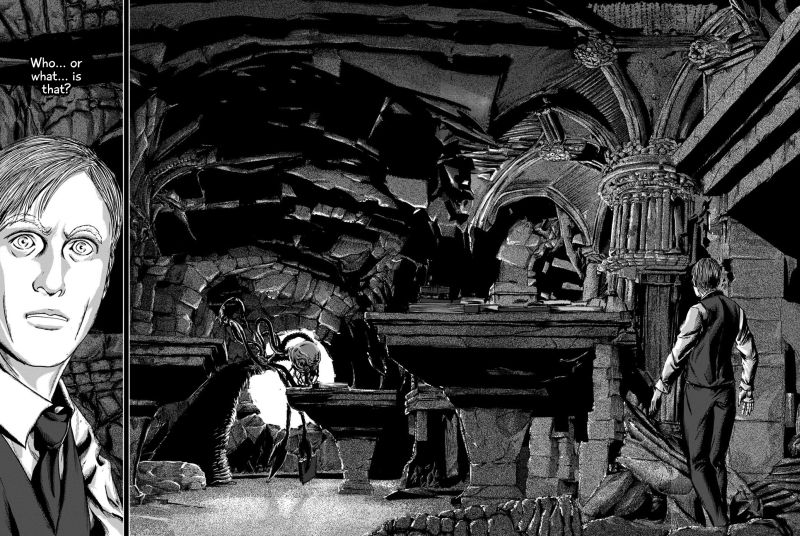
Another trend is the focus on more adult-themed stories, centering on complex issues and featuring older characters. This stands in stark contrast to the horror classics by Kazuo Umezu, Kanako Inuki, or Hideshi Hino. These works often center on the issues of adults, of people lost in society. They showcase the horror of being lost, the hopelessness surrounding them, and other similar themes.
Finally, both the global expansion of the manga industry and the power of social media have made horror manga much more accessible to readers around the world. With more publishers translating works and distributing them in multiple languages, horror manga is likely going to spread even further, opening up opportunities for new and emerging writers.
Overall, the future of horror manga looks more than promising, with a variety of new and exciting trends emerging in the genre.
Tips for Getting Into Horror Manga
If you’re new to horror manga, the medium and genre can be quite overwhelming. It’s often hard to know where to start and which manga are worth reading. So here are a few tips that can help you.
Research the Genre:
While some people prefer to dive right in, others might benefit from getting a general overview of the genre and the different types of horror manga out there. This might help you not only uncover the works that shaped the genre into what it is today, but also those that fit your personal tastes.
Check Out Recommendations:
Horror manga is one of the most popular manga genres out there, and a variety of online communities exist that have compiled a variety of resources and user-curated lists which can help you find series worth reading.
Read Reviews:
With a genre as vast and diverse as horror manga, it’s beneficial to read reviews before starting on a new series. Sites such as MyAnimeList or Baka-Updates often feature detailed reviews that give you insight into not only the quality of the art but also the storytelling, characters, plot, and more.
Start With Standalone Stories:
If you’re not sure where to start and don’t want to get invested in longer series such as Berserk, standalone stories or one-shots are a fantastic choice. They will give you a taste of how diverse the genre can be, the various distinct art styles, and can often introduce you to fantastic manga artists.
These are, of course, just some general tips, but I believe they are beneficial, especially to those who are new not only to the world of horror manga but also to manga in general.
Recommendations for Beginner Horror Manga Readers
As I mentioned above, it’s hard to know where to get started, so I provided you with a handful of interesting, but also diverse, choices.
Uzumaki by Junji Ito:
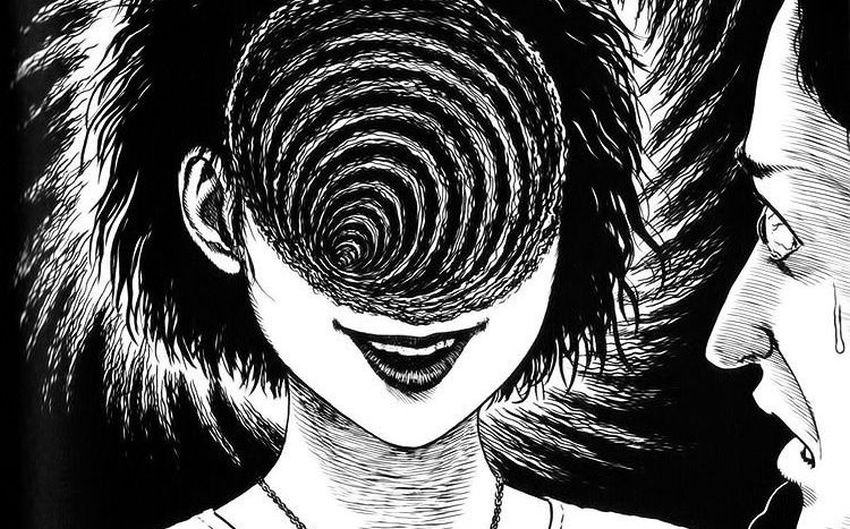
Junji Ito’s Uzumaki is by many regarded as a horror masterpiece. It’s one of the genre’s finest works both in terms of art, but also premise. Uzumaki is full of surreal, unsettling and disturbing art, and centers on a town which is haunted by spirals. It’s an extremely surreal work, but one I think is at the very top of the horror manga genre.
Parasyte by Hitoshi Iwaaki:
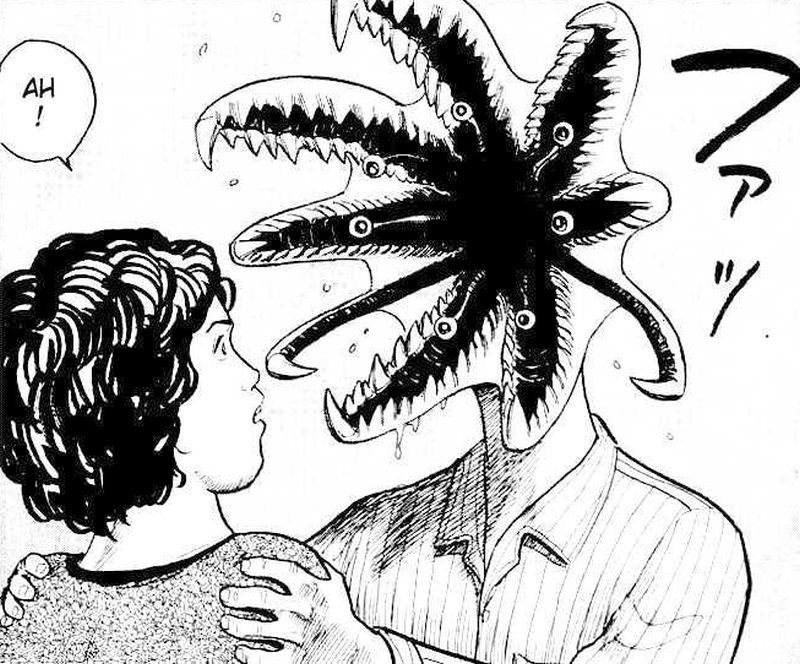
Parasyte can be best described as a classic body horror series which centers on a high school student who becomes infested by a parasitic alien. Before long, he comes into contact with and has to fight other, similar entities. It’s a series ripe on gore, and body horror, but also features a fantastic story.
Hideout by Kakizaki Masasumi:
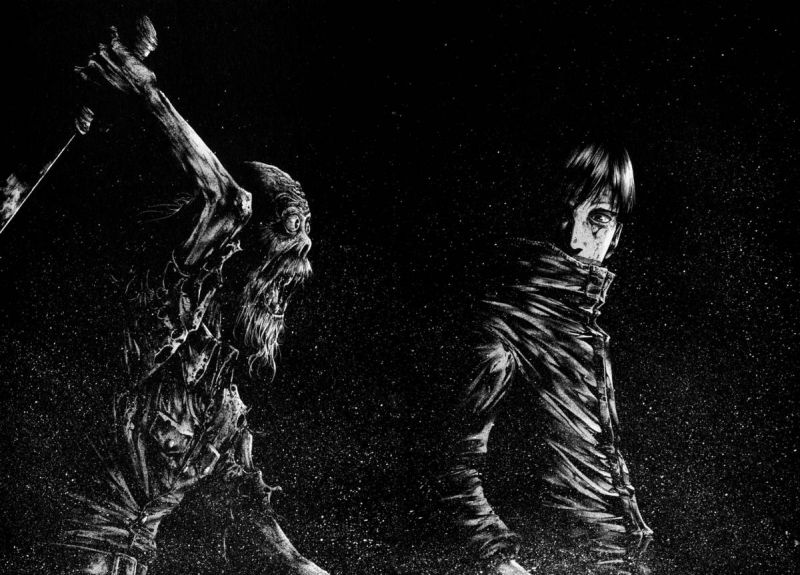
Hideout is a fantastic, short, psychological thriller. It comes with some of the best art the medium offers, but also a story that’s as twisted as it’s interesting. After a man, Seichi, tries to kill his wife, she flees into a cave system. Seichi pursues her, but soon realizes they are not alone.
Fuan no Tane by Masaaki Nakayama:
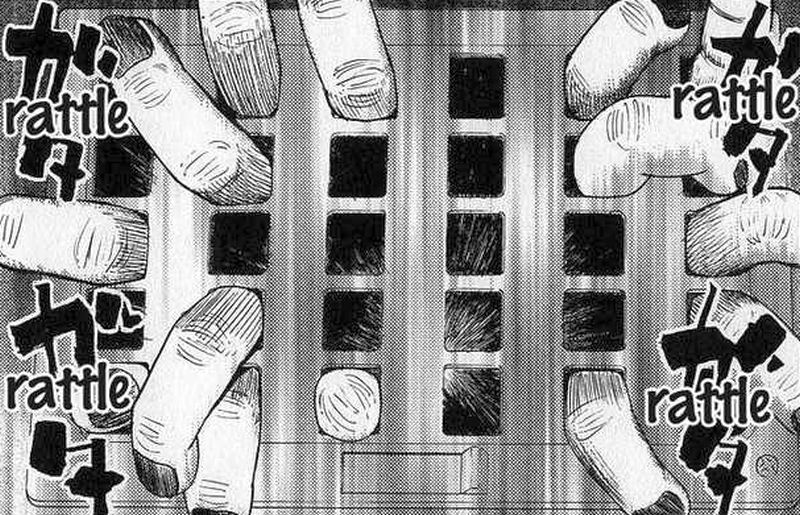
Fuan no Tane is a rather unconventional horror manga, but I believe it’s amongst the best in terms of scares. It’s a collection of short, creepy incidents, often involving ghosts or other supernatural entities often based on a central theme. There’s no plot, no important characters, just pure horror.
Franken Fran by Katsuhisa Kigitsu:
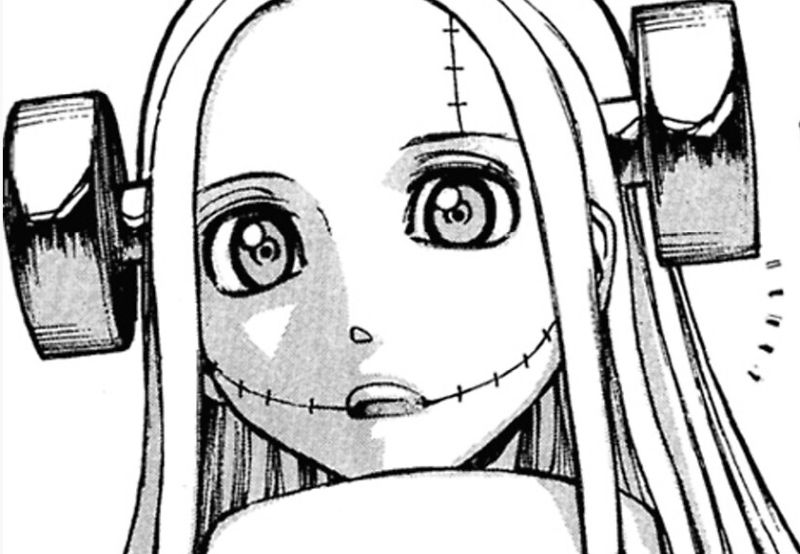
Franken Fran is a very weird manga and can considered a mixture of pure horror, comedy and satire. It centers on the misadventures of a girl named Fran who’s a brilliant surgeon. Over the course of the manga, she performs a variety of surgical procedures which often end in horrible results.
The Drifting Classroom by Kazuo Umezu:
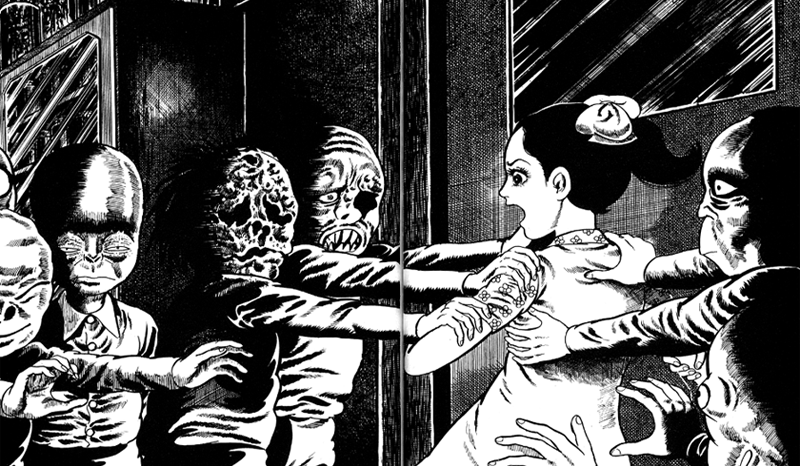
This horror manga’s nothing but a classic in the genre. While its art style is old-fashioned and its plot can be strange, it’s nothing short of horrible. It centers on an elementary school which is one day transported to a twisted and dark future. From here on out, the students have to survive in this strange, dangerous world.
These are just some recommendations and there are many other fantastic horror manga out there. If you’re looking for more recommendations, check out my list of the best horror manga, but also my list of the best Junji Ito books. However, I also urge you to check out online communities such as Reddit, who can often surprise you with niche recommendations and hidden gems.